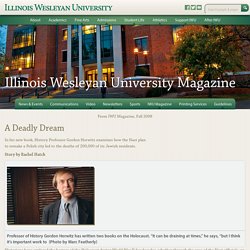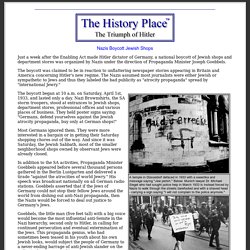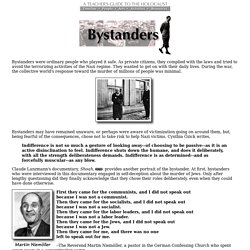

The Role of American Soldiers in World War II - History Follower. The Role of American Soldiers in World War II Although it wasn’t in the continent of Europe, this photo of U.S. soldiers raising a flag on top of the Japanese island Iwo Jima depicts the strugle that World War 2 brought to millions.

American soldiers, then and now, are aggressive, independent, self-sufficient and know how to survive. They are among the best trained and effective on the battlefield. In World War II, when America joined the allies in the fight to free Europe and the Pacific from the Axis powers, the war took on a new tempo. The American GI was reputed to be crude, crass, had no finesse, didn’t follow strict protocol, dress properly, or show proper identifications such as rank and division, but were welcomed by Allied forces to help get the job done. Sgt. The life of an American soldier during World War II was hard. American troops approaching Omaha Beach They moved by day to gain distance; they moved by night to mask their movements.
Kristallnacht remnants unearthed near Berlin. A huge dumping ground for the destroyed remains of Jewish property plundered during Kristallnacht has been found north of Berlin by an investigative journalist.

The site, which is the size of four football pitches, in Brandenburg, contains an extensive array of personal and ceremonial items looted during orchestrated nationwide riots against Jewish property and places of worship on the night of November 9 1938. It is believed the goods were brought by rail to the outskirts of the village and dumped on designated land. Yaron Svoray, the Israeli journalist who made the discovery, said it was a happy coincidence that he had stumbled across the artefacts so close to the 70th anniversary of the pogrom, also known as the Night of Broken Glass. "I wasn't fully aware of the historical significance of the find until it was pointed out to me by a historian," Svoray told the Guardian.
"We were looking for something completely different when we came across all these items and trinkets. " Kristallnacht. Illinois Wesleyan: Gordon Horwitz, Lodz. From IWU Magazine, Fall 2008 A Deadly Dream In his new book, History Professor Gordon Horwitz examines how the Nazi planto remake a Polish city led to the deaths of 200,000 of its Jewish residents.

Story by Rachel Hatch. 11. Search WW2DB & Partner Sites News Random Photograph Ruins of Urakami Roman Catholic church, Nagasaki, Japan, mid-1946 Current Site Statistics Famous WW2 Quote "All right, they're on our left, they're on our right, they're in front of us, they're behind us... they can't get away this time.

" Lt. 9. About Me Name: Orac Location: The Liberator, somewhere deep in Federation space, United States Orac is but a humble pseudonymous surgeon/scientist with an ego just big enough to delude himself that someone, somewhere might actually give a rodent's posterior about his miscellaneous verbal meanderings, but just barely small enough to admit to himself that few will.

That Orac has chosen his pseudonym based on a rather cranky and arrogant computer shaped like a clear box of blinking lights from an old British SF show whose special effects were renowned for their early 1980's BBC/Doctor Who-style low budget look, but whose stories nonetheless resulted in some of the best, most innovative science fiction for television ever produced, should tell you nearly all that you need to know about Orac. 7&8. Just a week after the Enabling Act made Hitler dictator of Germany, a national boycott of Jewish shops and department stores was organized by Nazis under the direction of Propaganda Minister Joseph Goebbels.

The boycott was claimed to be in reaction to unflattering newspaper stories appearing in Britain and America concerning Hitler's new regime. The Nazis assumed most journalists were either Jewish or sympathetic to Jews and thus they labeled the bad publicity as "atrocity propaganda" spread by "international Jewry. " The boycott began at 10 a.m. on Saturday, April 1st, 1933, and lasted only a day. Nazi Brownshirts, the SA storm troopers, stood at entrances to Jewish shops, department stores, professional offices and various places of business. They held poster signs saying: "Germans, defend yourselves against the Jewish atrocity propaganda, buy only at German shops! " 1. 2. Background:please read before teaching this.

This famous picture is called “The Last Jew in Vinnitsa”. This was the title given by the Einsatzgrup soldier in whose pocket it was found, scribbled on the back. Vinnitsa is a small town in the Ukraine whose entire Jewish population was wiped out by the Einsatzgruppen mass killing methods in 1941. This is all I tell my students when displaying this picture. They have already learned about the Einsatzgruppen and read the selection on “Battalion 101″ in Holocaust and Human Behaviour Chapter 7 Reading 3 . The Lesson The class gasps as I flick on the image. Invariably, when my students proceed to analyze what they see, one or more students comment: “the picture is POSED.”
The key part of the lesson is now at hand: I ask a student to come to the board and use three coloured markers to delineate the perpetrator9s), bystanders, and victims. Suddenly students search for a more nuanced view. 12. Bystanders were ordinary people who played it safe.

As private citizens, they complied with the laws and tried to avoid the terrorizing activities of the Nazi regime. They wanted to get on with their daily lives. 5. 6.